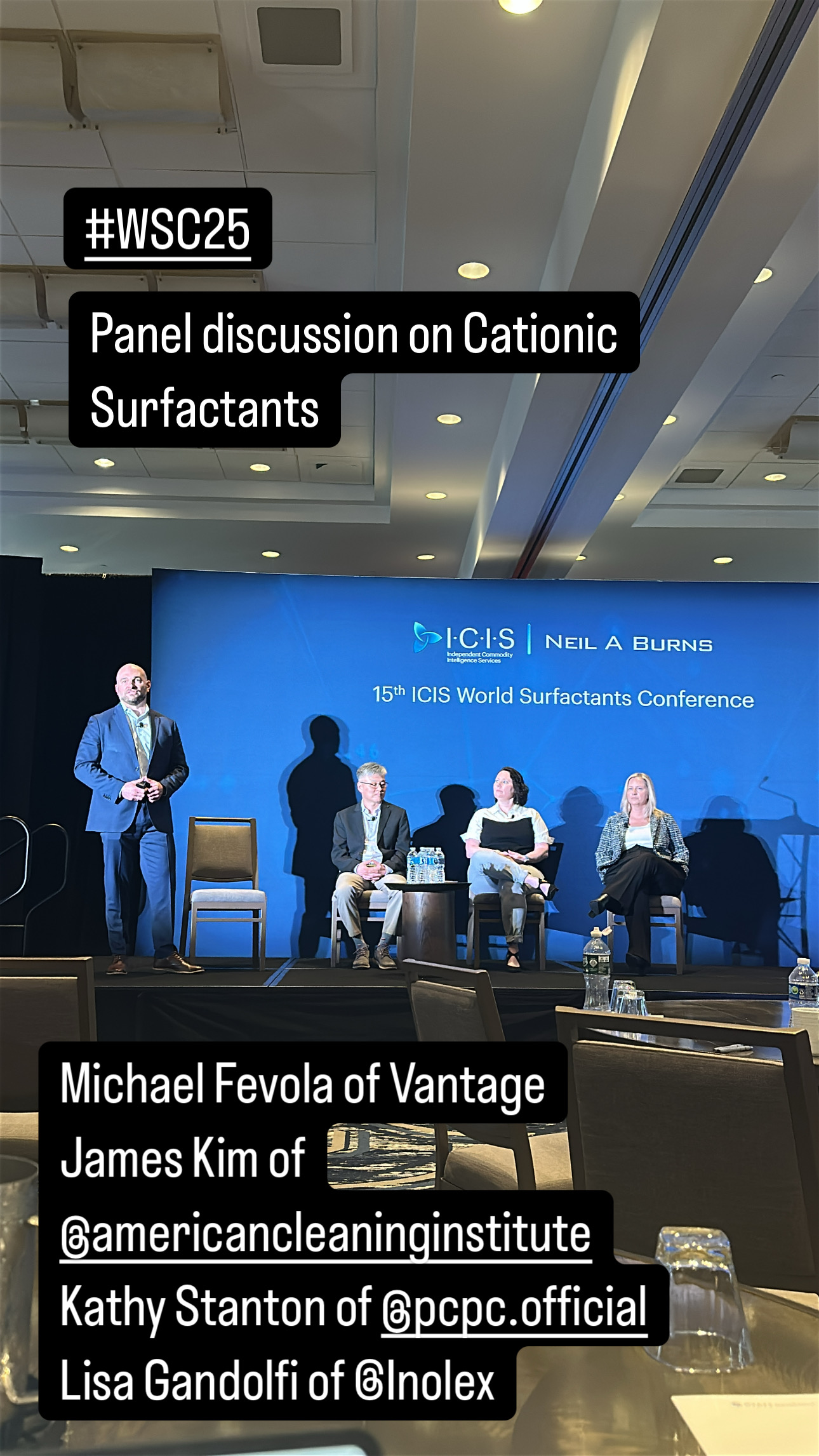The phrase “I don’t know” was a central theme emphasized during the opening remarks at the recently held World Surfactants Conference in Jersey City, New Jersey, USA. The two-day event centered on the heightened uncertainty and potential disruption in the chemical supply chain driven by US tariffs and other trade policies, while also highlighting a growing sense of optimism regarding sustainability-driven innovation within the surfactants industry.
Green D Market Analytics founder and principal Doris de Guzman moderated the Biosurfactant Panel Discussion. The presenters included Dennis Zlotnik, founder of BioReNuva; Christoph Krumm, Co-Founder and CEO of Sironix Renewables; and Michael Fielding, Chief Executive and Co-founder of Dot Ingredients (formerly Spherelose). Several takeaways include:
🔑 Performance-Driven Innovation
Biosurfactant developers emphasized that sustainability alone is not enough—market adoption hinges on matching or exceeding the performance and cost-effectiveness of synthetic surfactants. Customized molecular design and strain engineering are being used to meet these expectations.
🔑 Diverse Feedstocks and Technology Platforms
Panelists showcased varied approaches—from metabolic fermentation using natural oils and agri-waste (Sironix Renewables) to cellulose particle emulsifiers (Dot Ingredients) and precision-engineered microbial strains (BioReNuva)—underscoring that “biosurfactants” can emerge from both biological and physical transformation paths.
🔑 Commercialization Remains a Bottleneck
While some startups like BioReNuva are already producing at commercial scale (~30 tons/month), most are still in pilot or early-stage production. Scalability and consistent supply chain logistics remain key challenges.
🔑 Funding Shifts and Strategic Alignment
With public funding (e.g., DOE, USDA) playing a vital early role, companies increasingly turn to private capital and brand partnerships. Concerns were raised about potential U.S. policy shifts affecting future grant availability.
🔑 Market Pull vs. Regulatory Friction
Brand owners actively seek novel bio-based ingredients but face regulatory hurdles such as the EPA’s approval for new chemicals (via TSCA). Clearer communication from formulators and brand owners about performance needs would also accelerate product-market fit and investor confidence.
The event also highlighted several projects and initiatives targeting the production and consumption of bio-based and biotech-derived surfactants and feedstock. All of these and more will be included in an upcoming White Paper entitled: “Changing Landscape of the Alternative Renewable Surfactants Market”. This market report will provide an in-depth analysis of emerging technologies for renewable surfactant feedstock and production; recent trends in production capacity expansion; identifies key factors driving technological advancement; and discusses the primary challenges impeding commercialization. It will include a list of plants and projects focusing on novel bio-based and microbial-based surfactants, new renewable surfactant feedstock and mass balance-derived feedstock, and profiles of technology developers.
Please contact info@greendma.com for more information.












Leave a Reply